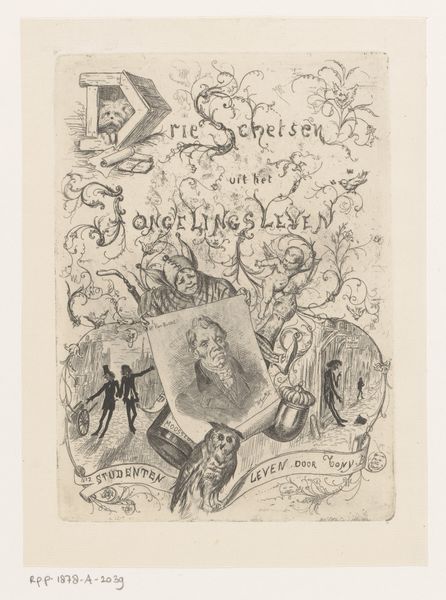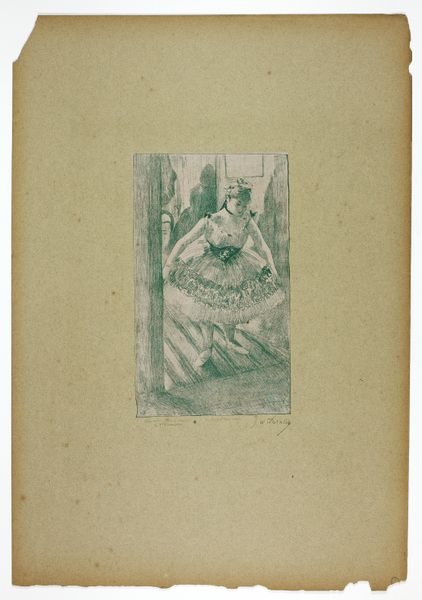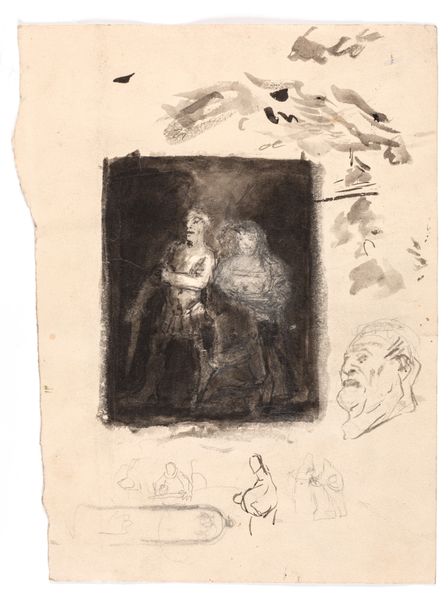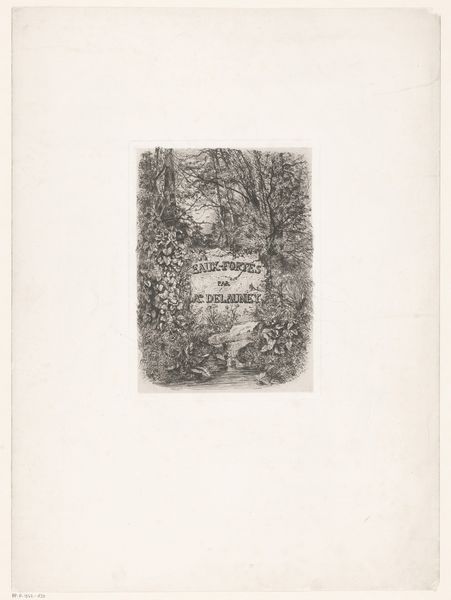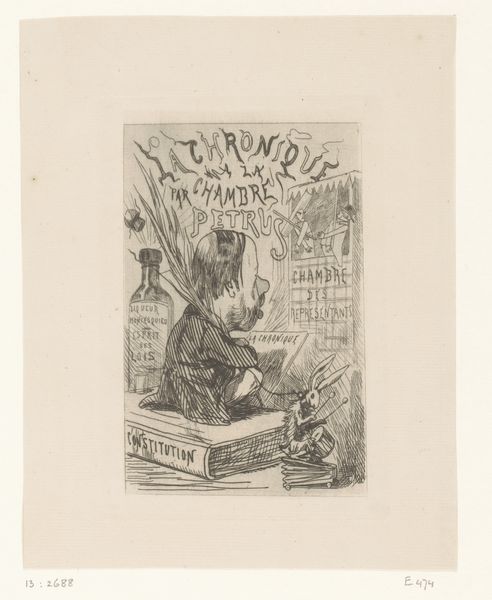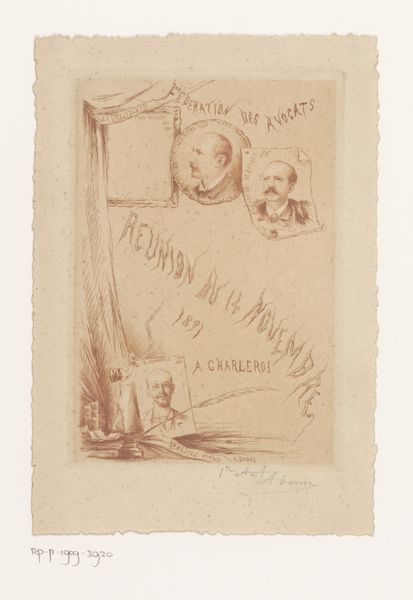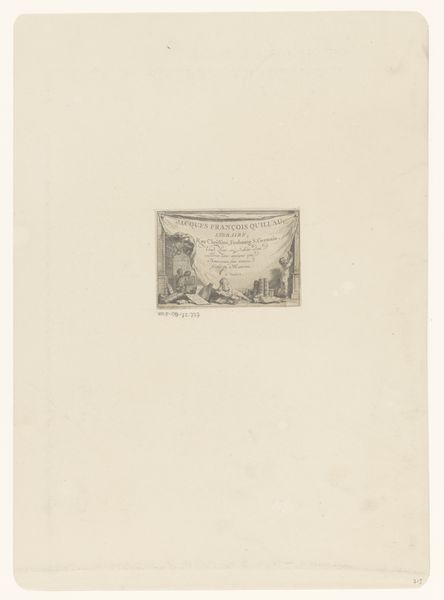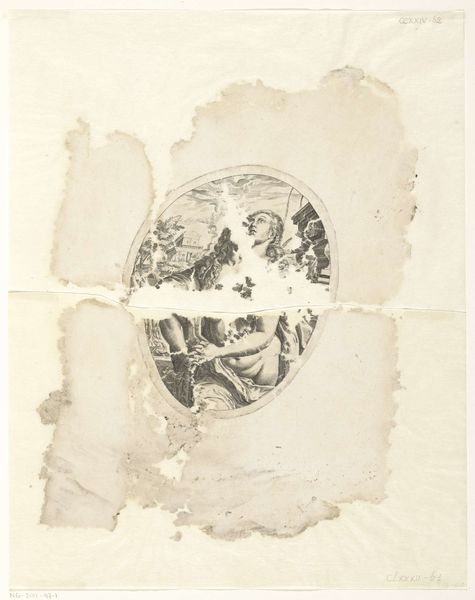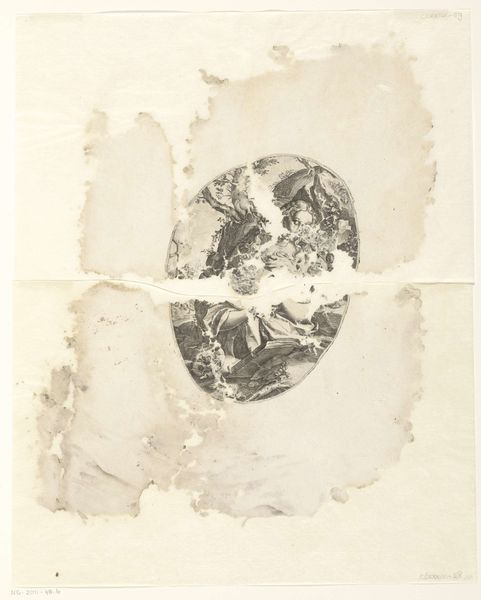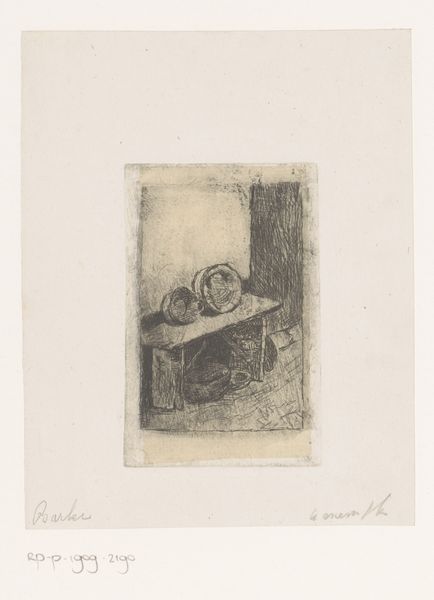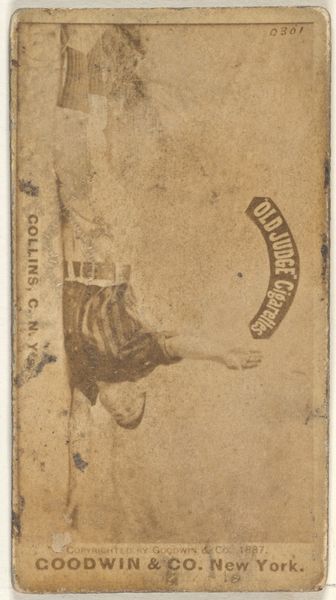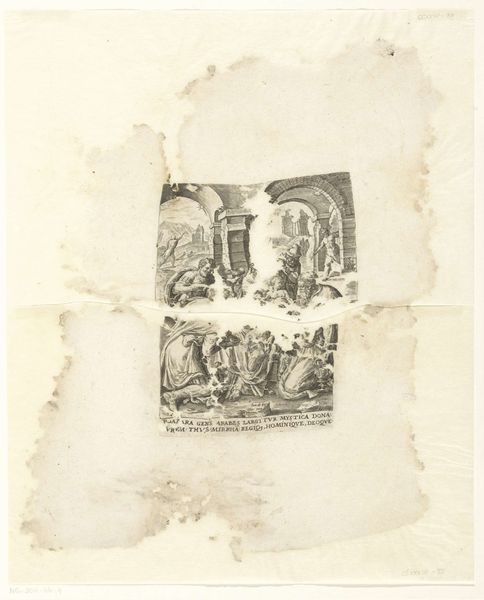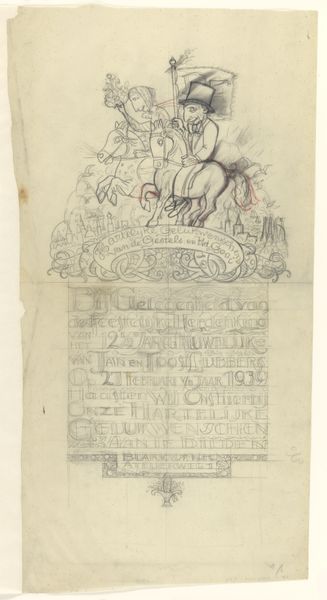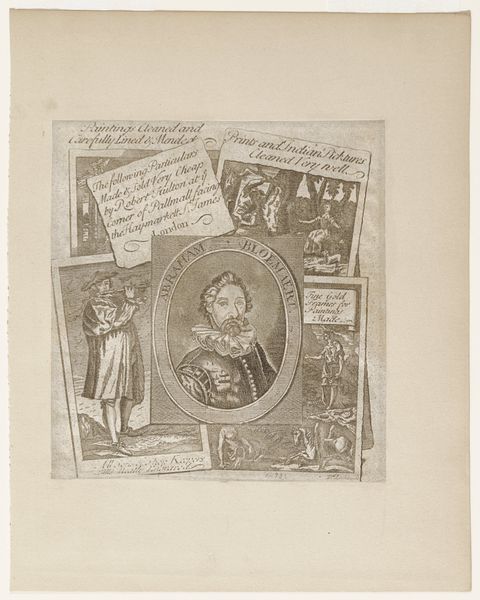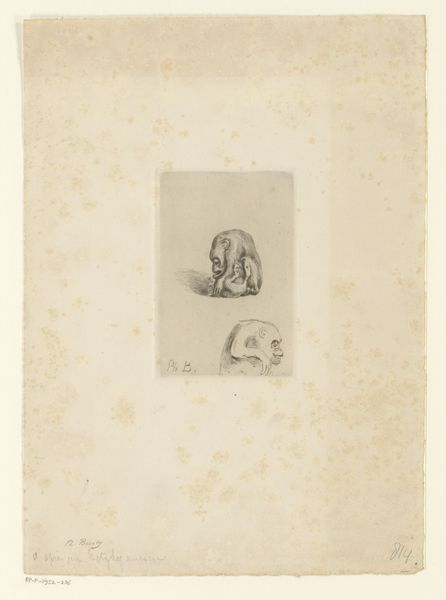
drawing, print, gouache, paper, ink, pen
#
drawing
# print
#
gouache
#
paper
#
ink
#
coloured pencil
#
pen
#
trompe-l'oeil
Dimensions: 307 × 240 mm
Copyright: Public Domain
Curator: So, we're looking at *Cantate: Trompe l'Oeil of Posted Prints*, made sometime between 1735 and 1765. It’s in the Art Institute of Chicago. What jumps out at you about this assemblage of paper, ink, gouache, pen, colored pencil? It's an illusion of papers stuck to a wood plank... very clever, isn't it? Editor: It's incredibly convincing! I’m struck by the artist’s skill in replicating the textures of paper and wood. I’m also interested in what all these printed items tell us. What do you see in this piece beyond the technical skill? Curator: Well, I'm interested in the making of this image and its social purpose. Consider the sheer labor involved in mimicking these printed ephemera. Each wrinkle, tear, and wood grain meticulously recreated! It's not simply about fooling the eye. What statements were possible by producing this, instead of producing the objects it depicted? Editor: So it's about more than just mimicking reality; it's a deliberate choice of artistic labor? Curator: Exactly. The materials and process are communicating something. Think about the rise of print culture during this period, how did creating this level of detail about printed ephemera elevate them or transform the context for consumption? Also how do you see value expressed here as both financial, through production, but also what is considered important in society? Editor: That’s a fascinating point. Recreating print materials by hand transforms our understanding of access and value during this time period. It makes me wonder about the relationship between “high” art and more “low” forms of communication and making. Curator: Precisely! It challenges those boundaries. Instead of painting a portrait of nobility or referencing the Bible, the image brings printed daily life front and center, while simultaneously celebrating the skilled artisanal labor of the image’s construction. What have you found here in the process and materiality? Editor: It makes me consider the amount of skill required to do something considered low-value, versus its high art product, creating something beautiful that reflects its components. Thank you. Curator: Indeed, it's about questioning those very hierarchies, about re-evaluating skill, labor, and the materials of everyday life.
Comments
No comments
Be the first to comment and join the conversation on the ultimate creative platform.
